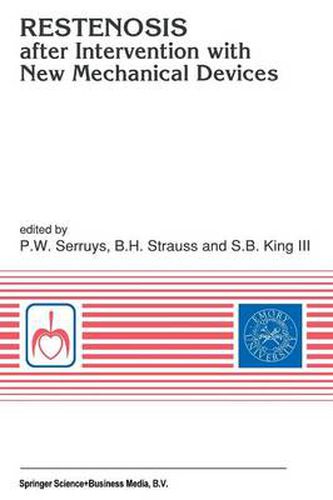Readings Newsletter
Become a Readings Member to make your shopping experience even easier.
Sign in or sign up for free!
You’re not far away from qualifying for FREE standard shipping within Australia
You’ve qualified for FREE standard shipping within Australia
The cart is loading…






This title is printed to order. This book may have been self-published. If so, we cannot guarantee the quality of the content. In the main most books will have gone through the editing process however some may not. We therefore suggest that you be aware of this before ordering this book. If in doubt check either the author or publisher’s details as we are unable to accept any returns unless they are faulty. Please contact us if you have any questions.
From the Foreword by Eric J. Topol In the past five years, interventional cardiology has entered a new era of evaluating percutaneous transcatheter technologies to treat coronary artery disease and prevent restenosis. Cardiologists attempting to follow this new and exciting field may easily be confused by the growth and expansion of new devices, the technical details relevant to each device and enthusiastic claims of success. This monograph is a comprehensive and objective assessment of restenosis from the perspective of these new technologies including stenting, atherectomy, rotational abrasion and lasers, written by innovators and pioneers.
The international breadth of experience is reflected in the summary of experiences from both sides of the Atlantic, at times with conflicting observations and results which in itself is valuable, given the diverse experience to date. In addition to the lucid summaries of the early and late results of these new devices, important issues in the methodology of restenosis research are addressed, including limitations of quantitative coronary arteriography in evaluating the new devices and important advances in alternatives to arteriography such as intravascular imaging. As a whole, this monograph is exceptionally worthwhile owing to its complete, up-to-date, balanced and visionary elements. There is no question that the new coronary device era has ushered in some excitement, and some despair.
This book serves a pivotal purpose by weaving so many new concepts together, establishing the groundwork for further development of mechanical approaches to limit restenosis. I heartily recommend this text to all interventional cardiologists interested in practical and research aspects of restenosis.
$9.00 standard shipping within Australia
FREE standard shipping within Australia for orders over $100.00
Express & International shipping calculated at checkout
This title is printed to order. This book may have been self-published. If so, we cannot guarantee the quality of the content. In the main most books will have gone through the editing process however some may not. We therefore suggest that you be aware of this before ordering this book. If in doubt check either the author or publisher’s details as we are unable to accept any returns unless they are faulty. Please contact us if you have any questions.
From the Foreword by Eric J. Topol In the past five years, interventional cardiology has entered a new era of evaluating percutaneous transcatheter technologies to treat coronary artery disease and prevent restenosis. Cardiologists attempting to follow this new and exciting field may easily be confused by the growth and expansion of new devices, the technical details relevant to each device and enthusiastic claims of success. This monograph is a comprehensive and objective assessment of restenosis from the perspective of these new technologies including stenting, atherectomy, rotational abrasion and lasers, written by innovators and pioneers.
The international breadth of experience is reflected in the summary of experiences from both sides of the Atlantic, at times with conflicting observations and results which in itself is valuable, given the diverse experience to date. In addition to the lucid summaries of the early and late results of these new devices, important issues in the methodology of restenosis research are addressed, including limitations of quantitative coronary arteriography in evaluating the new devices and important advances in alternatives to arteriography such as intravascular imaging. As a whole, this monograph is exceptionally worthwhile owing to its complete, up-to-date, balanced and visionary elements. There is no question that the new coronary device era has ushered in some excitement, and some despair.
This book serves a pivotal purpose by weaving so many new concepts together, establishing the groundwork for further development of mechanical approaches to limit restenosis. I heartily recommend this text to all interventional cardiologists interested in practical and research aspects of restenosis.